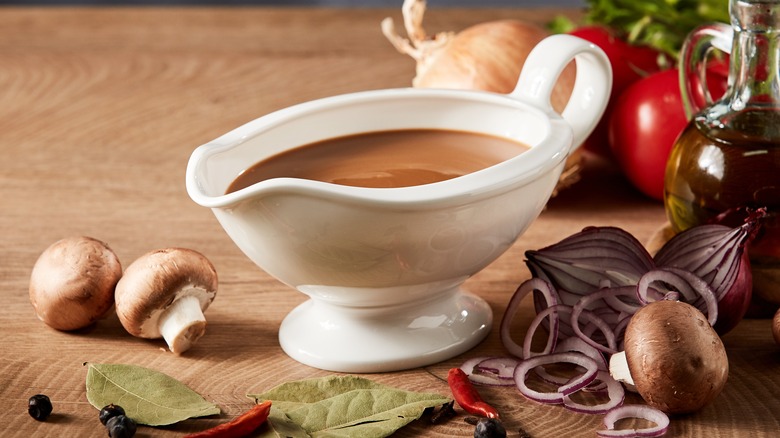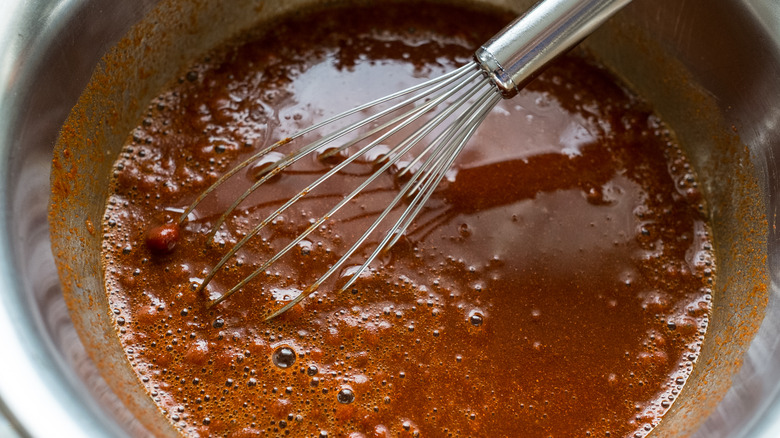The Hot Liquid Hack For Better Gravy With Less Stirring
It has long been considered that in order to avoid lumps when cooking gravy, you need to begin with a base of cold liquid. The idea is that, as the liquid heats up steadily and the thickening agent is stirred consistently, the agent will incorporate seamlessly into the gravy. However, if you use hot liquid right off the bat, you not only shorten your stirring time, but you get the same uniform texture as you would using the standard method.
Gravy consists of a few basic ingredients. You need broth or stock, fat (usually from the drippings of whatever meat you're roasting), and some kind of thickening agent. This could be flour, butter, a combination of the two (i.e. a roux), cornstarch, or arrowroot powder. The thickening agent needs to be stirred into the liquid in order to dissolve completely and thicken the gravy evenly.
The theory behind beginning with a cold broth is sound enough, but it can take a while and time is of the essence when you've got hungry guests and a resting roast. Now, hot liquid has not typically been recommended as it is thought to create clumps if added too quickly to the thickener. However, if you're stirring as the thickener is being added to the gravy, it should easily incorporate without clumping.
How to make gravy with hot stock
The base for any good gravy begins with the roasting juices left in the pan. You can remove a decent amount of fat from the juices, but be sure to leave some behind to absorb into the final gravy. Fat, after all, means flavor. In the meantime, as the roast is resting, heat up your stock. You can do this in a pot over medium-high heat, just until the point where it starts to simmer. You should also be simmering the roasting juices in their pan in order to reduce them and begin the thickening process.
Now, there are two directions you could go here. You could make a slurry, in which the thickening agent is mixed in with a little water in order to incorporate easier into the juices. You could also add the thickener directly to the bubbling stock, stirring constantly as it hits the liquid. You won't need to stir very long for the thickener to be fully incorporated into the hot liquid. Once it has, you can allow the stock to simmer for a few minutes on the stove. Then, strain the hot, reducing juices through a sieve into the thickened stock, stirring everything together into a beautiful thick gravy.
Saving time in this manner allows everything to stay warm while the gravy is cooking. Now that you've cut your time in half, you can get your meal to the table faster.

